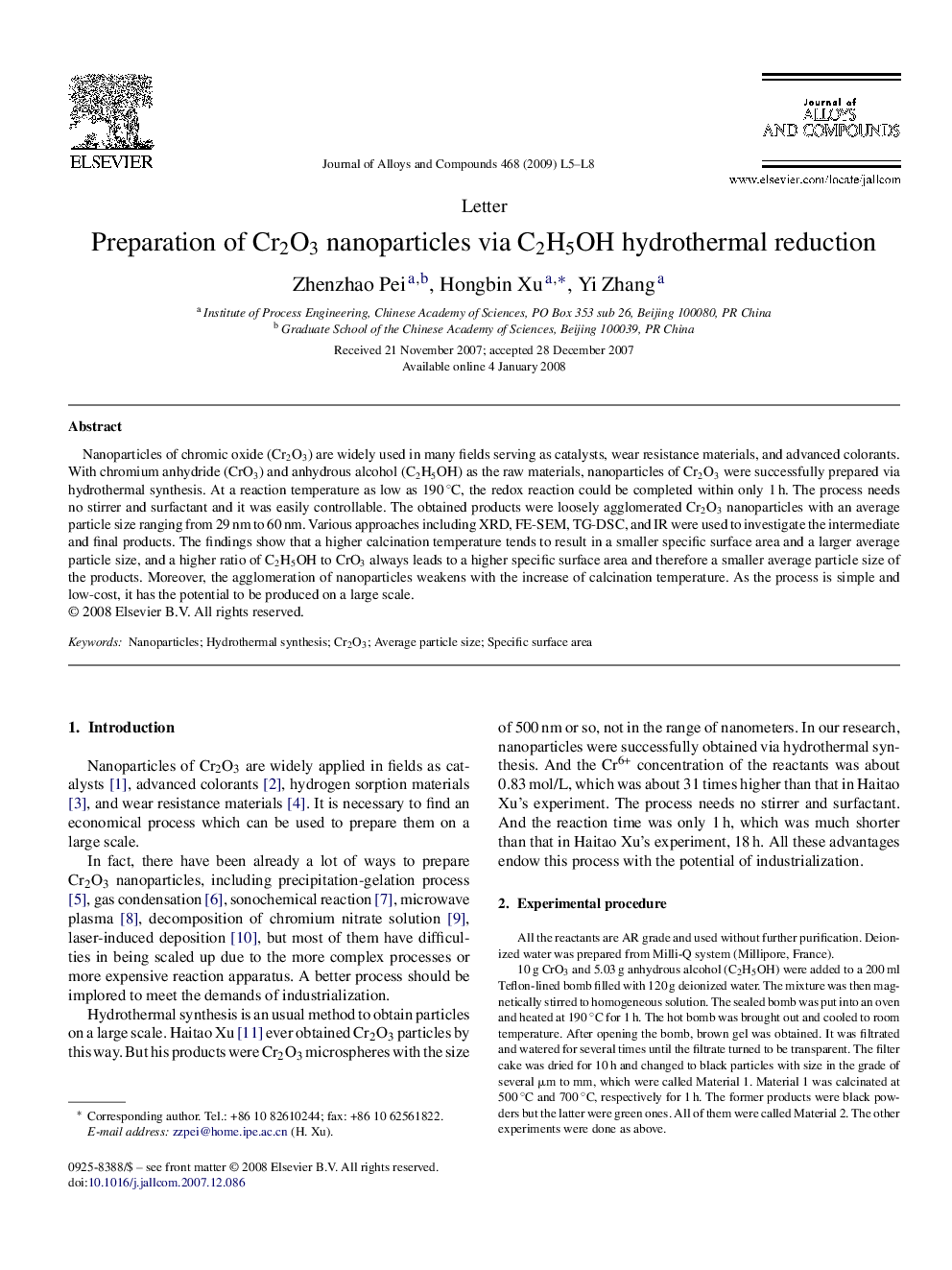| Article ID | Journal | Published Year | Pages | File Type |
|---|---|---|---|---|
| 1623634 | Journal of Alloys and Compounds | 2009 | 4 Pages |
Nanoparticles of chromic oxide (Cr2O3) are widely used in many fields serving as catalysts, wear resistance materials, and advanced colorants. With chromium anhydride (CrO3) and anhydrous alcohol (C2H5OH) as the raw materials, nanoparticles of Cr2O3 were successfully prepared via hydrothermal synthesis. At a reaction temperature as low as 190 °C, the redox reaction could be completed within only 1 h. The process needs no stirrer and surfactant and it was easily controllable. The obtained products were loosely agglomerated Cr2O3 nanoparticles with an average particle size ranging from 29 nm to 60 nm. Various approaches including XRD, FE-SEM, TG-DSC, and IR were used to investigate the intermediate and final products. The findings show that a higher calcination temperature tends to result in a smaller specific surface area and a larger average particle size, and a higher ratio of C2H5OH to CrO3 always leads to a higher specific surface area and therefore a smaller average particle size of the products. Moreover, the agglomeration of nanoparticles weakens with the increase of calcination temperature. As the process is simple and low-cost, it has the potential to be produced on a large scale.
